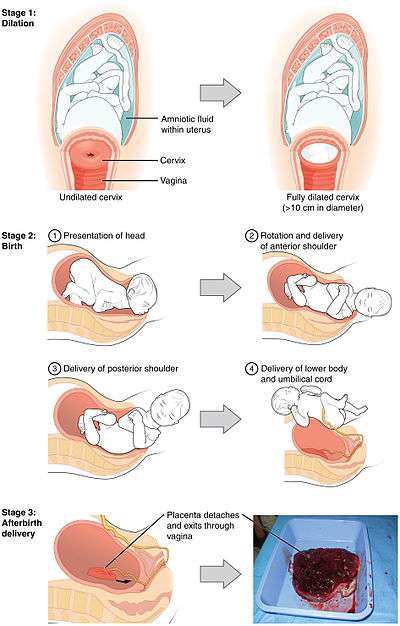Vaginal delivery

Sequence of images showing the stages of a normal vaginal delivery.

Sequence of images showing stages of an instrumental vaginal delivery.
A vaginal delivery is the birth of offspring (babies in humans) in mammals through the vagina. It is the natural method of birth for all mammals except monotremes, which lay eggs into the external environment. The average length of a hospital stay for a normal vaginal delivery is 36–48 hours or with an episiotomy (a surgical cut to widen the vaginal canal) 48–60 hours, whereas a C-section is 72–108 hours. Different types of vaginal deliveries have different terms:
- A spontaneous vaginal delivery (SVD) occurs when a pregnant female goes into labor without the use of drugs or techniques to induce labor, and delivers her baby in the normal manner, without forceps, vacuum extraction, or a cesarean section.
- An assisted vaginal delivery (AVD) or instrumental vaginal delivery occurs when a pregnant female goes into labor (with or without the use of drugs or techniques to induce labor), and requires the use of special instruments such as forceps or a vacuum extractor to deliver her baby vaginally.
- An induced vaginal delivery is a delivery involving labor induction, where drugs or manual techniques are used to initiate the process of labor. Use of the term "IVD" in this context is less common than for instrumental vaginal delivery.
- A normal vaginal delivery (NVD) is a vaginal delivery, whether or not assisted or induced, usually used in statistics or studies to contrast with a delivery by cesarean section.
Note: Use of the term IVD for instrumental vaginal delivery is best avoided because of its duplicate meanings.
See also
References
This article is issued from
Wikipedia.
The text is licensed under Creative Commons - Attribution - Sharealike.
Additional terms may apply for the media files.